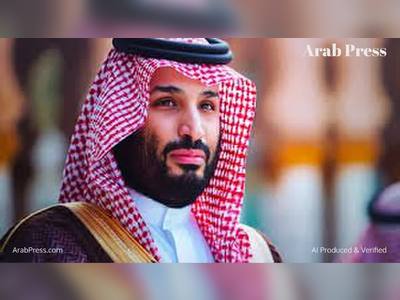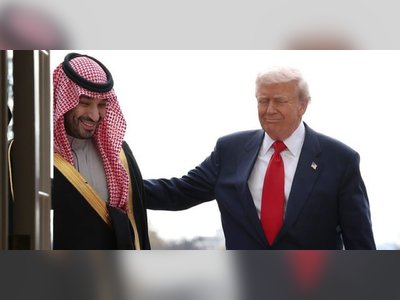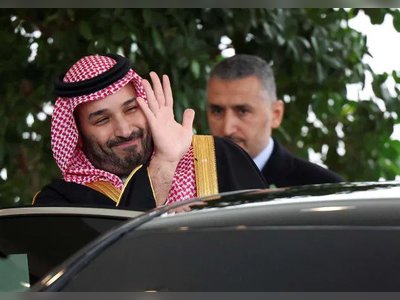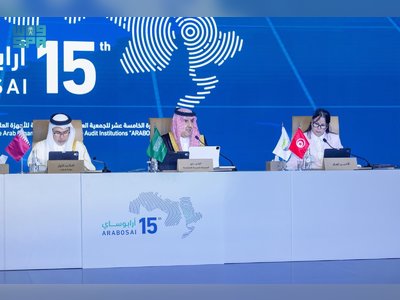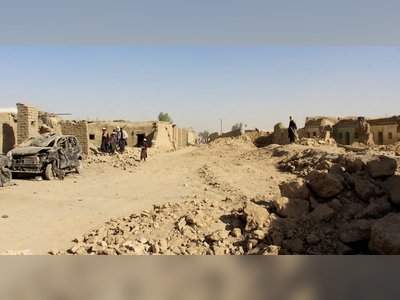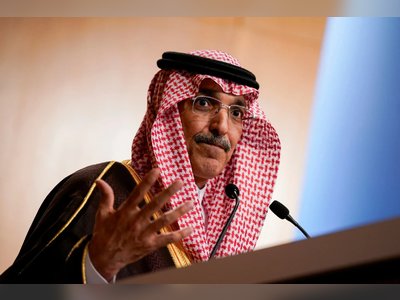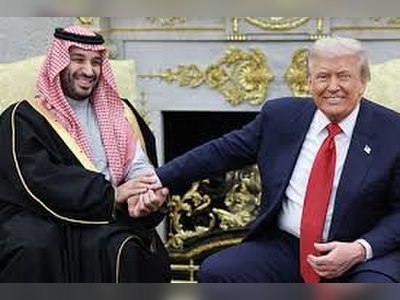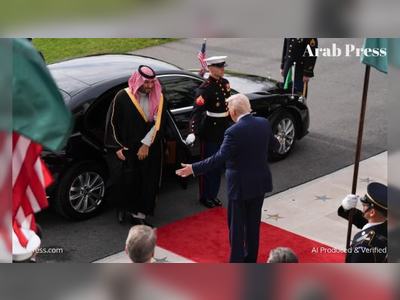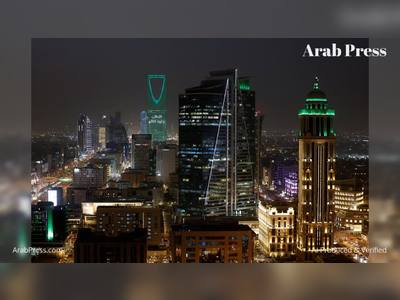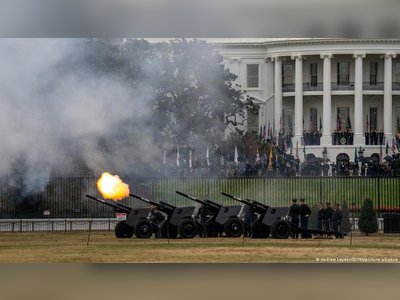
Iraqi calligraphy artist Hassan Massoudy’s search for harmony
“When I was younger, I went on a trip with my mother to visit her brother, who was a preacher and a thinker,” he remembers. “I looked at him in awe in his black clothes and large turban as he wrote literary phrases using a reed pen.
I didn’t know how to read at that time, but what attracted me was the black ink on the white paper. I used to see the Arabic letters as a set of pictures. I marveled at that sight.”
He remembers, too, being summoned to the front of his class when he was 10 years old. Expecting the worst, he made his way to the front slowly, only to be praised for the quality of his writing.
“I was over the moon when my teacher asked me to write in front of the other students in order for them to learn,” he says, pride still evident after all these years. “Today, after 66 years, I think that was the first time I wrote calligraphy in front of an audience — something I have continued to do all my life.”

Massoudy has spent a lifetime creating art that, despite its break with tradition, continues to express the beauty of Arabic calligraphy. He has taken individual letters and words, constructed them as huge sculptural works, and developed his artistic practice through the increased use of energy and speed.
This has led to the creation of texts with far greater character, he says, and to his own appreciation of the importance of space. “Beforehand, I thought that the letter was the only important aspect of calligraphy,” he says. “Now I realize that the space around the letters is another part of calligraphy — the letters and spaces must work together in harmony.”
Renowned for transforming poetic texts into vibrant works of art, Massoudy may have broken with classical calligraphic tradition, but his sentences are peppered with references to old masters.
In Istanbul, he met the last of the great Ottoman calligraphers, including Hamid Aytaç, and studied for a brief period of time at the Madrasat Tahsin Al Khotoout in Cairo. As an apprentice in Baghdad, he spent hours with Hashem Al-Baghdadi, considered the last of the classical calligraphers.

In 1980, he went in search of the official body of work of Ibn Muqla, a vizier within the Abbasid Caliphate and the first to codify the principles of calligraphy in the 10th century.
Although not a single line of Ibn Muqla’s work has survived, Massoudy has documented the calligrapher’s physical legacy, including a small eight-page notebook in Cairo and another in the National Library in Tunis. The former is a copy made some time in the 16th century.
“How do calligraphers from the past continue to affect me? Their beautiful lines have lived for thousands of years, and as a calligrapher you want to continue that. And as Jalaluddin Rumi says: ‘What you are looking for is also looking for you.’”
Born and raised in Najaf, Massoudy moved to Baghdad in his late teens. The idea was to study at the city’s Academy of Fine Arts but he didn’t meet the entry requirements, so turned instead to the calligraphers’ shops that could still be found in the city in the early Sixties.
The world he encountered there was populated by a small group of calligraphers, “but it was generous, open-minded, and unafraid of the collapse of classical methods.”

Although all of his work was in the world of advertising, he learned multiple styles of calligraphy, including elaborate forms such as Thuluth and Diwani, before leaving for Paris in 1969. There, he enrolled at the École des Beaux-Arts, where he produced his first figurative paintings and eventually formed what would become his own distinctive practice.
“In my calligraphy I reflect my personal state of being - my hopes and my aspirations,” he says. “I empty my soul of all its concerns, providing myself a state of inner peace.
This is a state of equilibrium between the artistic process of the self and the human community we are linked to. What can an artist do against the wars and the injustices faced by individuals?
I believe that an artist can make their work honestly representative of the time, and therefore a benefit for future generations. It’ll be for others to judge the quality of the artist’s work, therefore determining its longevity.”

The words he draws upon for his work are those of others, particularly the writings of poets and philosophers, including Rumi, Khalil Gibran and the Persian mystic Al-Hallaj.
He also draws heavily on proverbs from around the world. In doing so, he not only creates distinctive works of art, but promotes a message of peace and tolerance - two themes that are central to much of his work. That’s why words such as ‘love’ and ‘serenity’ are sprinkled liberally throughout his work.
That body of work is extensive, ranging from works on paper to theatrical performances that combine music and poetry with the creation of calligraphy live on stage.
His first such performance was with the French actor Guy Jacquet and the Iraqi multi-instrumentalist Fawzy Al-Aiedy - the trio toured for 13 years in the Seventies and early Eighties.
A later collaboration with the choreographer Carolyn Carlson and the Turkish musician Kudsi Erguner led to the creation of “Metaphore,” a ‘harmony of music, dance and calligraphy.’

“When I find a poetic verse, one that includes an image that I can see perfectly in my mind, I take its most beautiful words and spend days imagining the poet writing those words and how to formally reach a new expression through the new construction of a word,” Massoudy explains.
“I also try to think of what can be added to enrich the painting. For example, the use of colors, as I am a person who tries his best to achieve perfection.
When I speak of perfection, my goal is to create something that is as close as possible to the vision the poet had in mind. Therefore, I write the same word multiple times in a different size, even if it (differs) just by a few millimeters.”
This creative process was central to the creation of “Calligraphies of the Desert,” published by Saqi Books this month. Drawing inspiration from the writers and poets who ‘lost themselves in the mysteries of the desert,’ it is the end result of various trips undertaken by Massoudy and his wife Isabelle to the deserts of North Africa.
It was there that his calligraphy “took on the ochre, yellow and pink hues of the setting sun” and his lines “closely paralleled the hollows of the dunes.”
Massoudy’s artistic vision is a humanist one. He seeks to enhance society and to elevate culture, using inspirational words to “contribute modestly to public awareness.”
“Love, happiness, hope and dignity,” he says. “All of these themes, and many others, are needed in this current time.”

